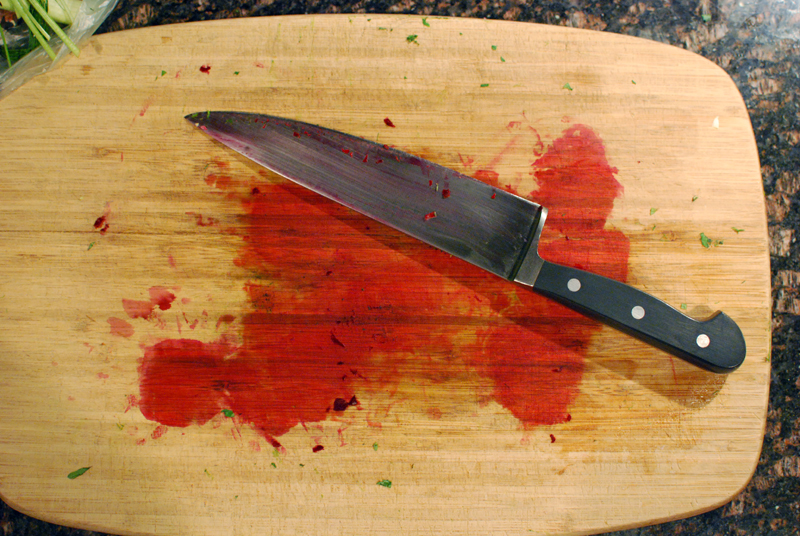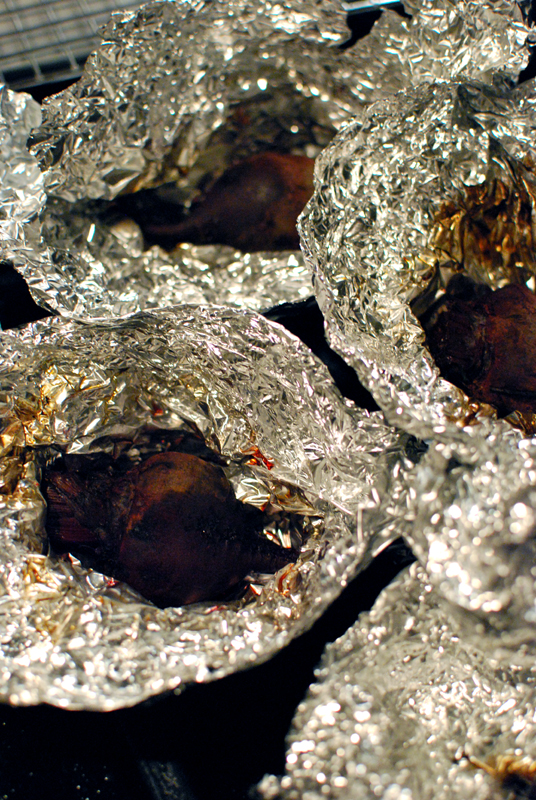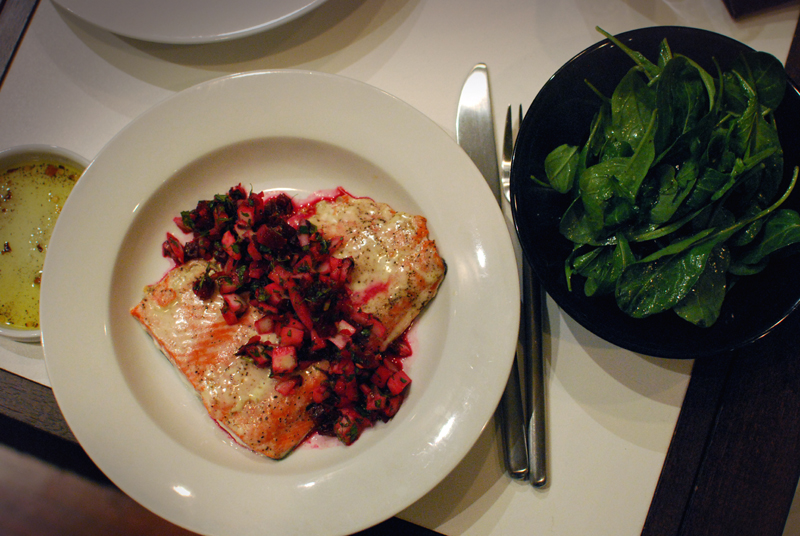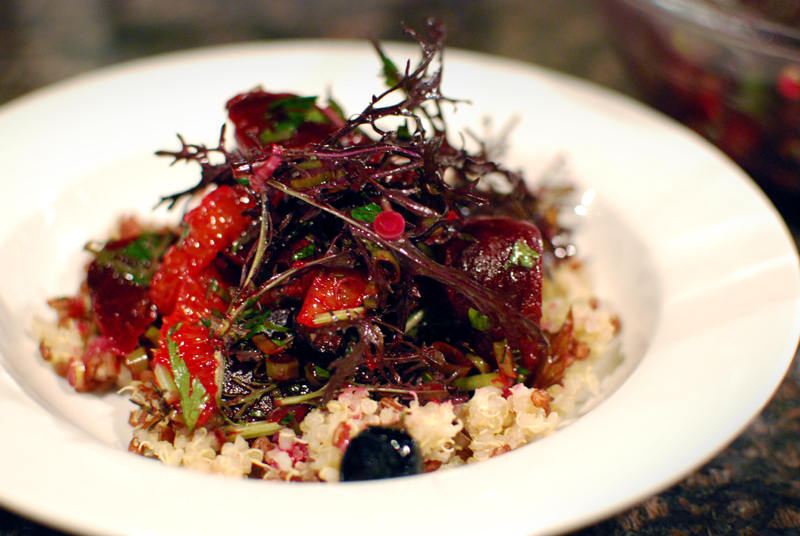My oh my, I haven’t given you all a recipe in ages, have I? Poor darlings, here you go.
Over dinner the other night, I helped a dear friend brainstorm ideas for her family’s Christmas feast. They planned on salmon, but needed ideas for something festive to dress it up. Fennel immediately sprung to mind, in a sort of raw relish, with a heavy dose of lemon.
Which would be, you know, okay, but it’s not good enough. Not for Christmas.
A quick google didn’t turn up exactly the soignée dish I had in mind, just page after page of fennel and cucumber summat-er-other. I wasn’t inspired at all until one word caught my eye: beets. Yes! Beets! Fennel and beets! Anise-y crunch with earthy sweetness. Perfect.
I wrote my friend an email, containing a sort of recipe that came out as a stream of consciousness, as I pictured what I might reach for were I making it right then. Roasted beets. Raw fennel, small dice. Toasted fennel seeds. Shallot. Lemon. Garlic. Olive oil. And loads of herbs. I was confident.

Of course, I had to try it out for myself. (Can’t let everyone else have all the fun, right?) A couple of filets of sockeye later, cooked according to my latest go-to, foolproof, perfect-every-time method, which you should absolutely try as soon as possible, my confidence turned into unabashed pride.
It’s crunchy, it’s sweet, it’s raw, it’s roasted, it’s bright, and it’s just killer with a fine piece of salmon. It’s exactly what I was going for.
Here’s hoping it can liven more than one holiday table this year. Bon appétit!
This relish is stunning served with a simple roast salmon, though I suspect darn near any fish would work quite well too. I can also see this as an hors d'oeuvre, with crostini and a tangy goat cheese, or even as a topping on those dreadful endive boats (if you insist on using them).
You may notice that the recipe calls for golden beets, while I clearly used red beets in the photos; if you don't mind a little staining, it doesn't matter which you use. Use both, if you like.
If you can, make this several hours or even a day in advance. It's one of those recipes that drastically improves with a little rest.
Ingredients
- 3 large or 5 small beets (preferably golden)
- 1 medium shallot
- 1 lemon (preferably organic)
- 1 clove garlic
- 1/2 teaspoon Dijon mustard
- 4 to 8 tablespoons olive oil, to taste
- 1 teaspoon whole fennel seed
- 1 tablespoon minced fresh thyme
- 1/4 cup minced fresh mint
- 1/4 cup minced fresh parsley
- 2 whole fennel bulbs, with leafy tops attached
- Freshly ground black pepper
Instructions
1. Preheat the oven to 400º F. Scrub the beets well, and trim the leafy tops which are hopefully still attached (save those for eating another time). Wrap each of the beets tightly in aluminum foil, and pop in the hot oven for 45 minutes to 1 hour, depending on how big they are. Small ones will, of course, cook faster.
2. Meanwhile, mince the shallot finely and put into a large bowl that won't stain (you know, glass or metal). Zest the lemon into the bowl, and squeeze in all the juice.
3. Smash and peel the garlic clove, chop into very small bits, and sprinkle with a generous pinch of salt. Using the side of your knife, smash and scrape the salted garlic into a paste. Add this paste to the bowl, along with the Dijon mustard.
4. Whisking constantly, drizzle in the olive oil. Use only enough to take the harsh edge off the dressing, while still letting the lemon flavor shine. This doesn't need to be perfectly emulsified, so don't worry about whisking it to perfect smoothness.
5. Toast the fennel seeds in a small pan over medium heat for a minute or so, just until fragrant. Either throw them in whole, or crush them up in a mortar and pestle, depending on preference.
6. Chop the thyme, mint, parsley, and a handful of fronds from the fennel; add to the bowl.
7. Remove the tops from the fennel, and any brown spots on the outside. Cut the fennel into a small dice, and add to the bowl with a few grinds of black pepper. Toss well, and let stand until the beets have finished roasting.
8. When the beets are done (they will feel slightly soft when squeezed through the foil), let cool until they can be handled. Peel the beets, chop into a small dice, and add to the other ingredients. Toss together, and taste to check the seasoning. Correct as needed with additional salt, pepper, olive oil, and/or lemon juice.
https://onehundredeggs.com/fennel-and-beet-relish-with-salmon-2/







